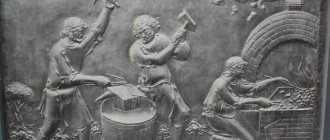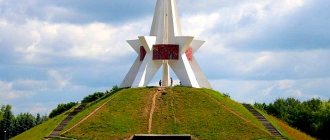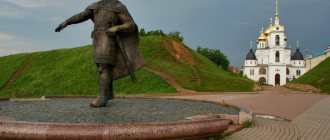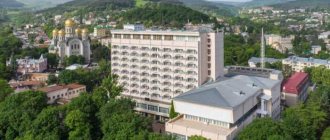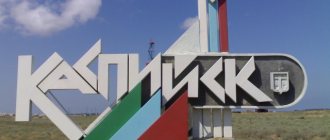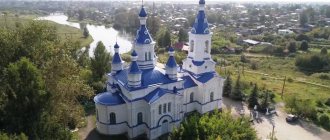History of the creation of the monument
The city of Tula has been a major industrial center since the beginning of the 18th century. Here today there is an arms factory, opened by decree of Peter the Great, as well as large steel and machine-building enterprises. Many city residents work at these facilities, and for them Levsha Leskova is a real national hero. The issue of creating a monument to the Tula literary hero himself was actively discussed in the 80s. After a competition of sculpture sketches, the best option was chosen. And already in 1989, Lefty was cast in bronze at the Tula Mashzavod. The author of the chosen project is the talented sculptor Bronislav Krivokhin. Initially, the monument was installed on the territory of the plant, and it was inaccessible for inspection by tourists and city residents. Almost twenty years later, in May 2009, the administration of the enterprise donated the sculpture to the city and moved it to a city street.
On the subject: Tomris Inger: biography, films and TV series, photos
Monument to Lefty - the symbol of Tula craftsmen
The monument to Lefty, a folk craftsman and favorite, was made in 1989 in connection with the 50th anniversary of the founding of the Tula Machine-Building Plant. Before the creation of the monument, a competition was held for the best design of the monument - a symbol of the working skills of the Tula people. The winner was the former head of the communications department of the machine-building plant, Bronislav Krivokhin. “They gave me a workshop on the ninth floor in a building under construction. Ninth floor, no elevator. Plaster, carried water to the ninth floor! I did it for two months without days off, from morning to night! It was hard, but my soul sang,” recalls Bronislav Krivokhin.
There is no specific description of Lefty’s appearance in N. Leskov’s story “The Tale of the Tula Oblique Lefty and the Steel Flea.” From the literary work it is only known that Lefty was “oblique, had a birthmark on his cheek, and the hair on his temples was torn out during training.” So from whom did the sculptor borrow the appearance for his work? “I chose the person closest to me - my son. They put a wig on him, a ribbon and an apron,” says the author of the monument. Krivokhin depicted Lefty squinting his eye to examine the newly savvy flea. His facial expression and posture show that he is happy with his work. The master himself is dressed in the work clothes of a Tula gunsmith, his hair is tied with braid, his forehead is open. The figure is made in full height. In his left hand, the left-hander holds a blacksmith’s hammer, in his right hand, at eye level, is that same flea. Quotes from the works of great writers are engraved on the edges of a two-meter pedestal made of red marble. The left-hander was made in the foundry of the Tulamash plant. For a long time, the monument was located on the territory of the enterprise, on Labor Glory Square. In order for guests and residents of Tula to admire the monument, the monument to Lefty was donated to the city. Since 2009, Lefty has taken a worthy place among the famous city monuments - the monument to Nikita Demidov and the monument to Peter I. The figure of the bronze master was placed in the historical part of the city on a 2-meter pedestal as a sign of respect for the Tula gunsmiths and industrialists of the Demidov dynasty. Lefty Nikolai Leskov had a real prototype - Alexey Surnin, a foreman at the Tula Arms Factory. Tula residents are proud of the life of a talented Russian self-taught man, their fellow countryman, whose biography formed the basis of N. Leskov’s work. Indeed, at one time Surnin was sent to study in England, and showed such skills as a gunsmith that many admired his skill in arms making. The master worked with his left hand, which is why Leskov’s hero is left-handed. So the word “left-handed,” at least in Tula, became a symbol of skill, and the monument to Lefty became a symbol of Tula craftsmen. Address: Tula, st. Mosina, 2. By car from Inshinka SPA: 14 km, 25 min.
Monument to Lefty in Tula: description and photo
Today everyone can see the monument to Lefty. It is located near the territory of the Tulamashzavod, 200 meters from the main building (exact address: Mosina St., 2. It is almost impossible not to notice the monument; the figure of a literary character is installed on an impressive pedestal, lined with red granite. The stone base has the shape of a hexagon, on each face of which quotations from literary works are carved. Lefty is depicted in full growth, in one hand he holds a hammer, and in the other his main work - a savvy flea. Leskov's hero is dressed in simple work clothes and a traditional protective apron, his hair is pulled back from his forehead braid The figure radiates calm, self-confidence and pride.
Monument to Lefty: a symbol of Tula’s mastery
The monument to Lefty is a symbol of the skill of Tula workers. True, about ten years ago local wits dubbed this monument the “Salary Monument,” but the joke did not catch on - at all times, gunsmiths’ salaries were the highest, their skill was the highest, and their authority was indisputable. This is confirmed by official statistics. For example, in 1913, the average salary of workers in Russia was 37.5 rubles, and at the same time, separately at the Tula Imperial Arms Plant, the average salary was more than 50 rubles.
The authorities of the arms capital had been planning to erect a monument to the famous character of Leskov’s “The Tale of the Tula Scythe Lefty and the Steel Flea” for a long time. Even a competition was announced in the 80s for the best project. The winner was determined, the best were noted, but it never came to fruition in metal - no sources of funding were found.
In 1989, at the Tula Machine-Building Plant named after Ryabikov, in honor of the 50th anniversary of the enterprise, they decided to erect their monument to Lefty on the territory. The monument was made of bronze according to the design of the sculptor Bronislav Ivanovich Krivokhin. The legendary master Lefty is depicted by the author in full growth, in work clothes, with his hair tied with braid. The master, clutching a blacksmith's hammer in his left hand, examines in his other hand the same flea he has just forged.
The sculpture is installed on a two-meter hexagonal pedestal lined with red marble. On the edges of the lower part of the pedestal are quotes from the works of Russian writers, including N. S. Leskov himself.
In addition to Tula, there are monuments to Lefty in Orel and Chelyabinsk. They are all different. Orlovsky Lefty is, first of all, a monumental illustration of the work of the writer Nikolai Leskov and does not pretend to be an independent work of art. In the monument to the Chelyabinsk Lefty, the viewer’s attention is focused not on the master as the main figure, but on a savvy flea: a magnifying glass is built into the sculpture, through which you can examine the insect.
Tula Lefty is captured at the peak of creativity: he looks at the finished work with pride, with satisfaction, but at the same time, with pickiness. Looking at the spiritualized figure, the viewer understands: this is not just a wonderful master, but a creator, a creator.
Additional information is provided by the inscriptions placed on the hexagonal pedestal. Among the quotes from famous writers, the lines of the master of fairy tale literature, the author of “Legends of Master Tychka”, and Honorary Citizen of the Hero City of Tula, Ivan Fedorovich Pankin, are highlighted in front. Tychka is not just a master, but a teacher of Tula masters, including Lefty. Creating legends about this character, the writer I.F. Pankin collected materials for several years in the famous Armory Settlement, studied the life, habits and folklore of Tula masters. Therefore, his image of Tychka turned out to be familiar and recognizable to the people of Tula, and this image took root in Tula, along with Lefty.
Writer I.F. Pankin explained Leskovsky’s Lefty this way:
“For some reason, reading N. Leskov’s Tale, no one is surprised that Tula craftsmen shoed a flea. That is, they immobilized and broke the foreign mechanism. They could have placed some kind of violin in her paws so that the flea could dance and minuet, and also play the violin. Didn't think of it? No, they SPECIFICALLY deprived this flea of movement. Due to their profession, Tula gunsmiths were extremely clean; almost everyone had a bathhouse in their own home, and there were also several public bathhouses in the city. Gunsmiths did not tolerate fleas, bedbugs, or cockroaches in everyday life and did not allow them to exist. That's why they shoed the flea - they showed their skills, and at the same time expressed their attitude towards this insect. That's the main thing! Russian craftsmanship is always intertwined with high spirituality!”
Were there really such masters as the legendary Lefty? And they were and are.
In 1767, the outstanding Tula gunsmith Alexei Mikhailovich Surnin was born, who, according to some researchers, became the prototype of the main character of N. S. Leskov’s work “The Tale of the Tula Oblique Lefty and the Steel Flea.” He, as Lefty, was sent to England to improve his artistic work, but Surnin’s fate was more successful. He returned to his homeland and successfully worked at the Tula arms factory, dying in prosperity and honor. Grave of A.M. Surnina has been preserved; both Tula residents and guests of the city come to it.
In the 20th century, one of the most famous miniaturists was considered to be the engraver of the Tula Arms Factory, teacher of the School of Weaponry, Mikhail Isaevich Pochukaev. The famous Tula Museum of Arms houses his work - an original souvenir, representing eleven tiny paintings engraved on plexiglass with an area of 2.6 square meters. mm. They are placed in a special frame with “windows” through which, using a microscope, you can see the text of the Anthem of the Soviet Union, portraits of designers S.I. Mosin and F.V. Tokarev, the drawing “Lefty at Work” and other scenes reflecting the history of the Tula Arms Plant. The general title for this series was the author’s inscription: “In memory of my love for the Motherland and my profession. M. Pochukaev" and "I donate to the Tula Museum of Weapons."
And in modern Tula there are miracle masters who continue the traditions of the masters of the past. Only they don’t “shoe” fleas, but with the help of the weapons they create, they destroy all evil spirits that bring grief and tears to the world.
Portrait likeness or living legend?
The literary Lefty had a very real prototype that inspired the writer to create the story - the real-life Tula master Alexei Surnin. It is unknown what this man looked like; Leskov describes his hero as “slanting” and the owner of a birthmark on his face. The monument to Lefty in Tula is a collective image of a master gunsmith. The bronze figure is quite masculine, with well-developed muscles. Tula Lefty is stocky, but at the same time he looks quite harmonious and impressive.
On the topic: Hydraulic calculation of heating networks: concept, definition, calculation methodology with examples, tasks and design
